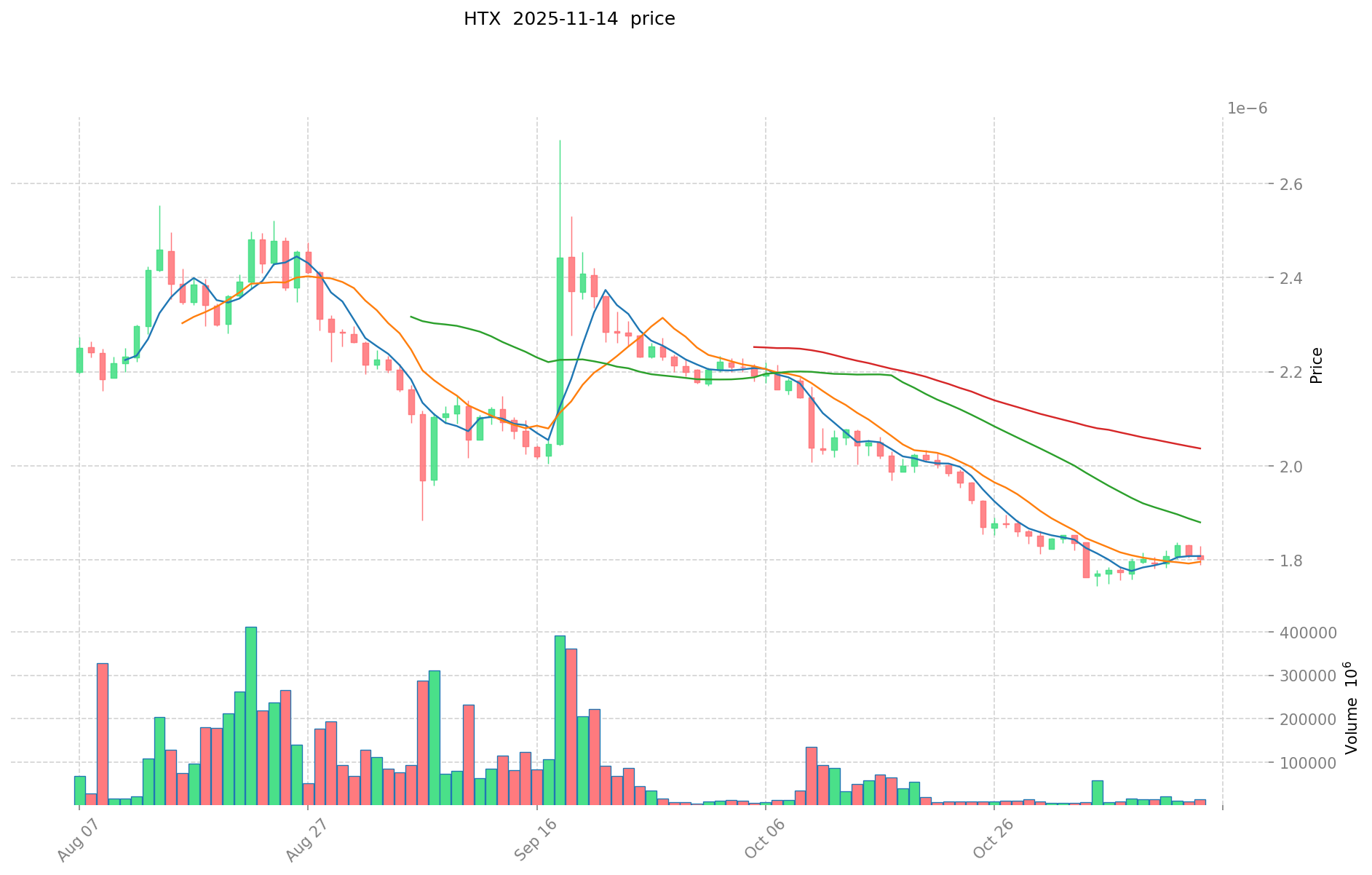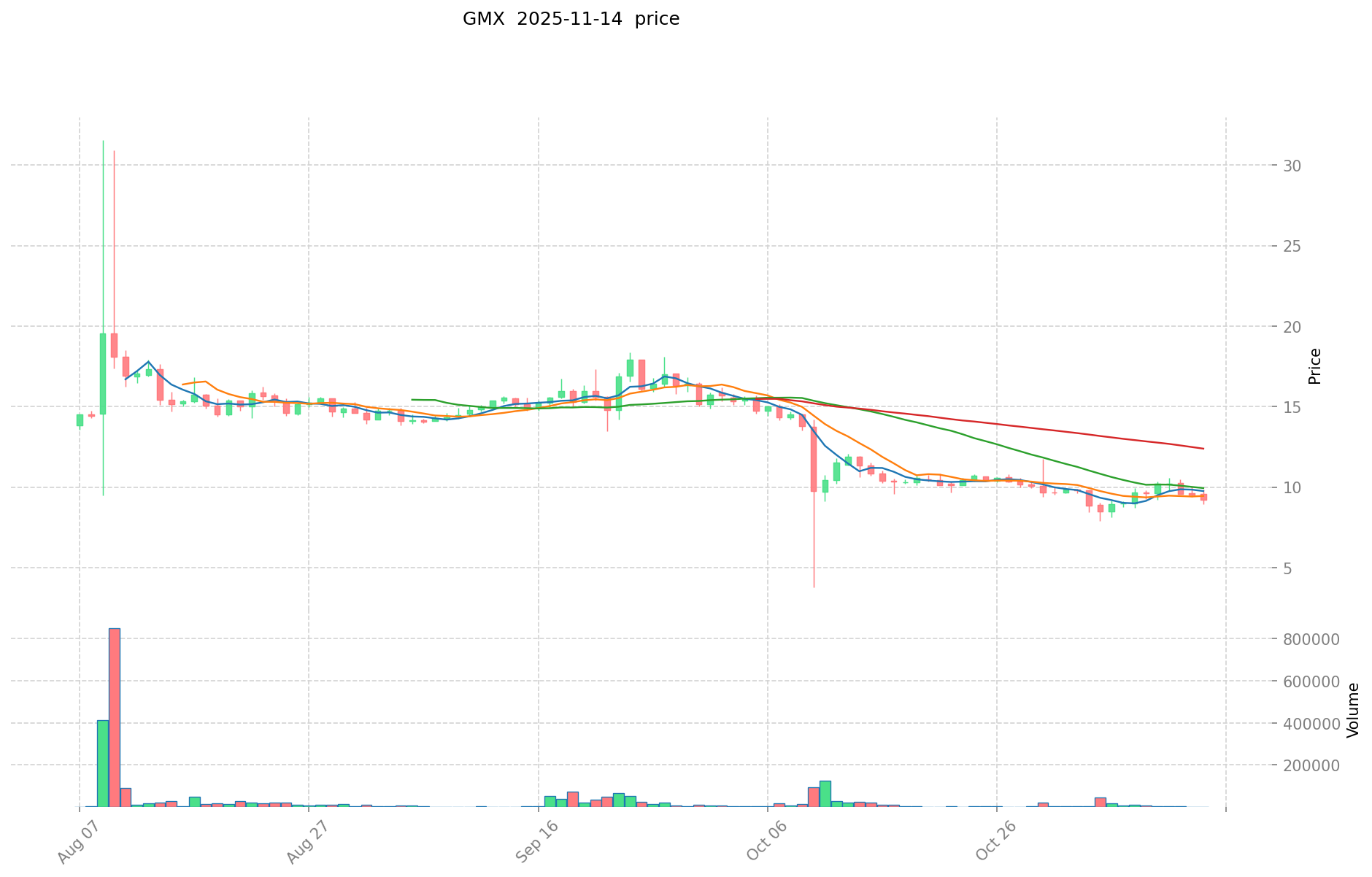HTX vs GMX: Comparing Two Leading Decentralized Derivatives Exchanges in the Crypto Space
Introduction: Investment Comparison of HTX vs GMX
In the cryptocurrency market, the comparison between HTX vs GMX has been an unavoidable topic for investors. The two not only show significant differences in market cap ranking, application scenarios, and price performance, but also represent different positioning in the crypto asset space.
HTX (HTX): Since its launch, it has gained market recognition for its role as the largest contributor to ecosystem liquidity in the HTX DAO ecosystem.
GMX (GMX): Introduced as a decentralized and sustainable exchange, it has been recognized for its utility and governance token features.
This article will comprehensively analyze the investment value comparison between HTX vs GMX, focusing on historical price trends, supply mechanisms, institutional adoption, technological ecosystems, and future predictions, attempting to answer the question that concerns investors the most:
"Which is the better buy right now?"
I. Price History Comparison and Current Market Status
HTX (Coin A) and GMX (Coin B) Historical Price Trends
- 2024: HTX reached its all-time low of $0.00000029 on February 2nd.
- 2024: GMX hit its all-time high of $91.07 on April 18th.
- Comparative analysis: In the current market cycle, HTX has risen from its low point of $0.00000029 to the current price of $0.0000018085, while GMX has fallen from its high of $91.07 to the current price of $9.019.
Current Market Situation (2025-11-15)
- HTX current price: $0.0000018085
- GMX current price: $9.019
- 24-hour trading volume: HTX $39,685.90 vs GMX $22,640.28
- Market Sentiment Index (Fear & Greed Index): 16 (Extreme Fear)
Click to view real-time prices:
- View HTX current price Market Price
- View GMX current price Market Price


II. Core Factors Affecting Investment Value: HTX vs GMX
Supply Mechanism Comparison (Tokenomics)
- HTX: Deflationary token with quarterly buy-back and burn mechanism. Total supply capped at 500 million with around 81.9% currently in circulation.
- GMX: Fixed maximum supply of 13.25 million tokens with distribution across GLP holders, staking rewards, and ecosystem development. Over 86.3% of total supply is currently in circulation.
- 📌 Historical pattern: Deflationary mechanisms like HTX's quarterly burns have historically created positive price pressure during burn events, while GMX's fixed supply creates scarcity as adoption increases.
Institutional Adoption and Market Applications
- Institutional holdings: GMX has gained more institutional interest due to its decentralized perpetual exchange model and yield opportunities from trading fees.
- Enterprise adoption: GMX offers better infrastructure for decentralized derivatives trading with low slippage, while HTX provides broader centralized exchange services with more institutional-grade tools.
- Regulatory attitudes: GMX faces fewer direct regulatory challenges as a decentralized protocol, while HTX as a centralized exchange navigates stricter regulatory requirements across jurisdictions.
Technical Development and Ecosystem Building
- HTX technical upgrades: Implementation of advanced security measures following security incidents, with enhanced platform stability and user protection mechanisms.
- GMX technical development: Expansion to Arbitrum and Avalanche networks, implementation of GLP liquidity system, and development of GMX V2 with improved capital efficiency and risk management.
- Ecosystem comparison: GMX leads in decentralized perpetual futures trading with over $400 million in TVL, while HTX offers a broader range of centralized services including spot trading, futures, and staking products.
Macroeconomic Factors and Market Cycles
- Performance during inflation: GMX has demonstrated stronger performance during inflationary periods due to increased trading activity on its platform generating higher fees for token holders.
- Macroeconomic monetary policy: Both tokens are affected by broader crypto market conditions, but GMX's fee-sharing model provides more consistent returns during market volatility.
- Geopolitical factors: HTX faces more geopolitical challenges as a centralized entity, while GMX's decentralized nature offers better resilience against regional restrictions.
III. 2025-2030 Price Prediction: HTX vs GMX
Short-term Prediction (2025)
- HTX: Conservative $0.00000166382 - $0.0000018085 | Optimistic $0.0000018085 - $0.000002658495
- GMX: Conservative $7.12343 - $9.017 | Optimistic $9.017 - $10.54989
Mid-term Prediction (2027)
- HTX may enter a growth phase, with prices estimated between $0.000001945934696 and $0.000002403801684
- GMX may enter a consolidation phase, with prices estimated between $6.427723365 and $11.24851588875
- Key drivers: Institutional capital inflow, ETFs, ecosystem development
Long-term Prediction (2030)
- HTX: Base scenario $0.000002904112941 - $0.000003180069374 | Optimistic scenario $0.000003180069374 - $0.000003804387953
- GMX: Base scenario $14.081093055892406 - $14.491221979850437 | Optimistic scenario $14.491221979850437 - $17.178933528188735
Disclaimer: This prediction is for informational purposes only and should not be considered as financial advice. Cryptocurrency markets are highly volatile and unpredictable. Always conduct your own research before making any investment decisions.
HTX:
| 年份 | 预测最高价 | 预测平均价格 | 预测最低价 | 涨跌幅 |
|---|---|---|---|---|
| 2025 | 0.000002658495 | 0.0000018085 | 0.00000166382 | 0 |
| 2026 | 0.000002345172375 | 0.0000022334975 | 0.00000192080785 | 23 |
| 2027 | 0.000002403801684 | 0.000002289334937 | 0.000001945934696 | 26 |
| 2028 | 0.000002909744705 | 0.00000234656831 | 0.0000016660635 | 29 |
| 2029 | 0.000003180069374 | 0.000002628156508 | 0.000002549311812 | 45 |
| 2030 | 0.000003804387953 | 0.000002904112941 | 0.000002758907294 | 60 |
GMX:
| 年份 | 预测最高价 | 预测平均价格 | 预测最低价 | 涨跌幅 |
|---|---|---|---|---|
| 2025 | 10.54989 | 9.017 | 7.12343 | 0 |
| 2026 | 11.64229955 | 9.783445 | 9.1964383 | 8 |
| 2027 | 11.24851588875 | 10.712872275 | 6.427723365 | 18 |
| 2028 | 16.36123418199375 | 10.980694081875 | 7.79629279813125 | 21 |
| 2029 | 14.491221979850437 | 13.670964131934375 | 6.972191707286531 | 51 |
| 2030 | 17.178933528188735 | 14.081093055892406 | 10.560819791919304 | 56 |
IV. Investment Strategy Comparison: HTX vs GMX
Long-term vs Short-term Investment Strategy
- HTX: Suitable for investors focused on ecosystem potential and deflationary mechanisms
- GMX: Suitable for investors seeking consistent yields and exposure to decentralized derivatives trading
Risk Management and Asset Allocation
- Conservative investors: HTX: 30% vs GMX: 70%
- Aggressive investors: HTX: 60% vs GMX: 40%
- Hedging tools: Stablecoin allocation, options, cross-token portfolios
V. Potential Risk Comparison
Market Risk
- HTX: Higher volatility due to deflationary mechanism and quarterly burns
- GMX: Exposed to market volatility but mitigated by fee-sharing model
Technical Risk
- HTX: Platform security, scalability challenges
- GMX: Smart contract vulnerabilities, liquidity risks in extreme market conditions
Regulatory Risk
- Global regulatory policies have different impacts on centralized (HTX) and decentralized (GMX) platforms
VI. Conclusion: Which Is the Better Buy?
📌 Investment Value Summary:
- HTX advantages: Deflationary mechanism, broader centralized exchange services
- GMX advantages: Decentralized perpetual exchange model, consistent fee-sharing returns
✅ Investment Advice:
- New investors: Consider a balanced approach with a slight bias towards GMX for its lower regulatory risk
- Experienced investors: Explore opportunities in both, with strategic allocation based on market cycles
- Institutional investors: GMX may offer better long-term value due to its decentralized nature and growing institutional interest
⚠️ Risk Warning: Cryptocurrency markets are highly volatile. This article does not constitute investment advice. None
VII. FAQ
Q1: What are the main differences between HTX and GMX? A: HTX is a centralized exchange token with a deflationary mechanism, while GMX is a decentralized perpetual exchange token with a fixed supply and fee-sharing model. HTX offers broader centralized exchange services, while GMX focuses on decentralized derivatives trading.
Q2: Which token has shown better price performance recently? A: GMX has shown better price performance recently. While HTX has risen from its all-time low, GMX has maintained a higher price point despite falling from its all-time high.
Q3: How do the supply mechanisms of HTX and GMX differ? A: HTX has a deflationary token model with quarterly buy-back and burn mechanisms, while GMX has a fixed maximum supply of 13.25 million tokens distributed across various stakeholders.
Q4: Which token is more suitable for long-term investment? A: Both tokens have long-term potential, but GMX may be more suitable for long-term investment due to its consistent fee-sharing model and growing institutional interest in decentralized finance.
Q5: What are the main risks associated with investing in HTX and GMX? A: HTX faces higher regulatory risks as a centralized exchange token, while GMX is exposed to smart contract vulnerabilities and liquidity risks. Both are subject to market volatility.
Q6: How do institutional adoption patterns differ between HTX and GMX? A: GMX has gained more institutional interest due to its decentralized model and yield opportunities, while HTX provides more institutional-grade tools as part of a centralized exchange ecosystem.
Q7: What factors should investors consider when choosing between HTX and GMX? A: Investors should consider their risk tolerance, investment horizon, preference for centralized vs. decentralized platforms, regulatory concerns, and the potential for consistent returns through fee-sharing (GMX) versus deflationary mechanisms (HTX).
Share
Content